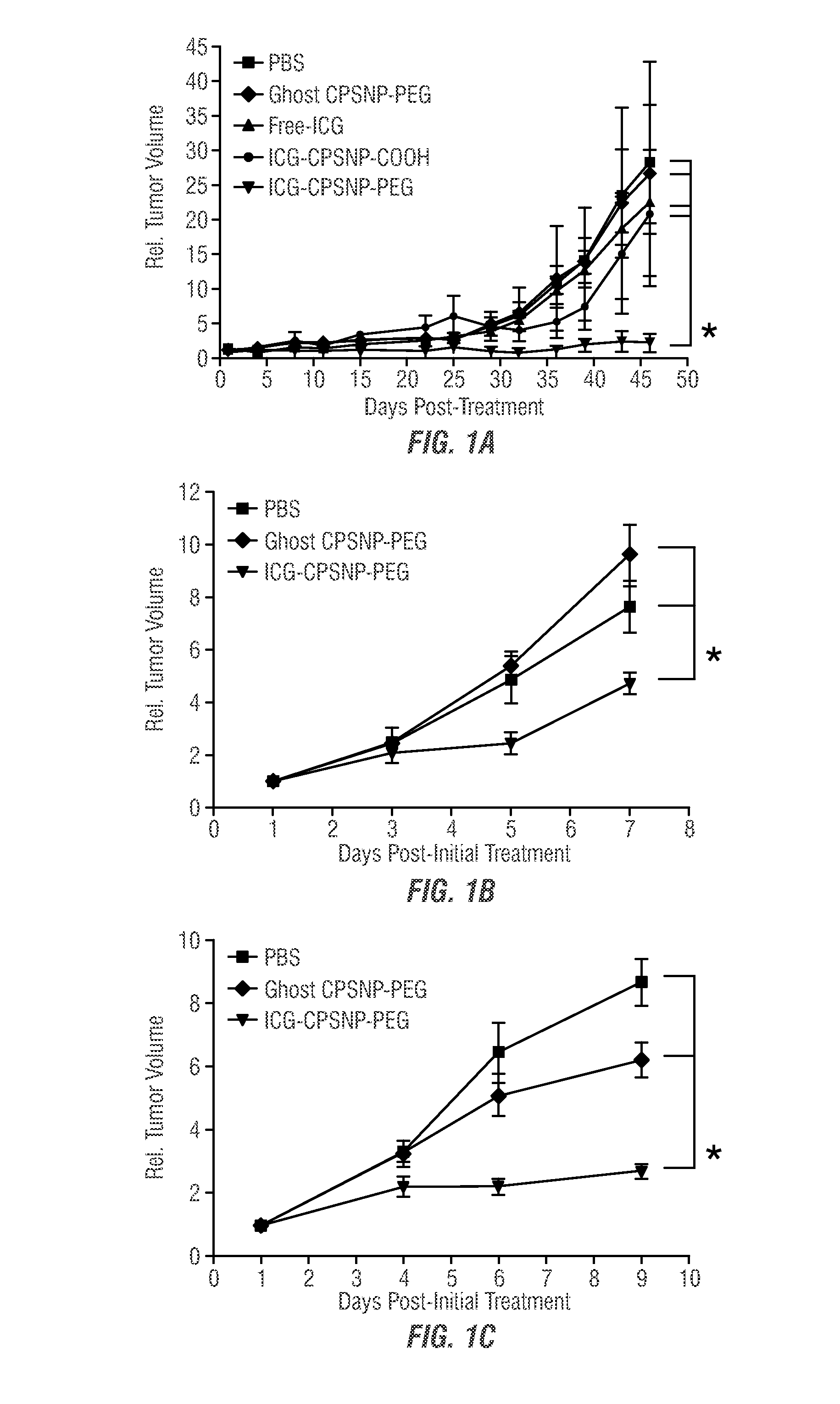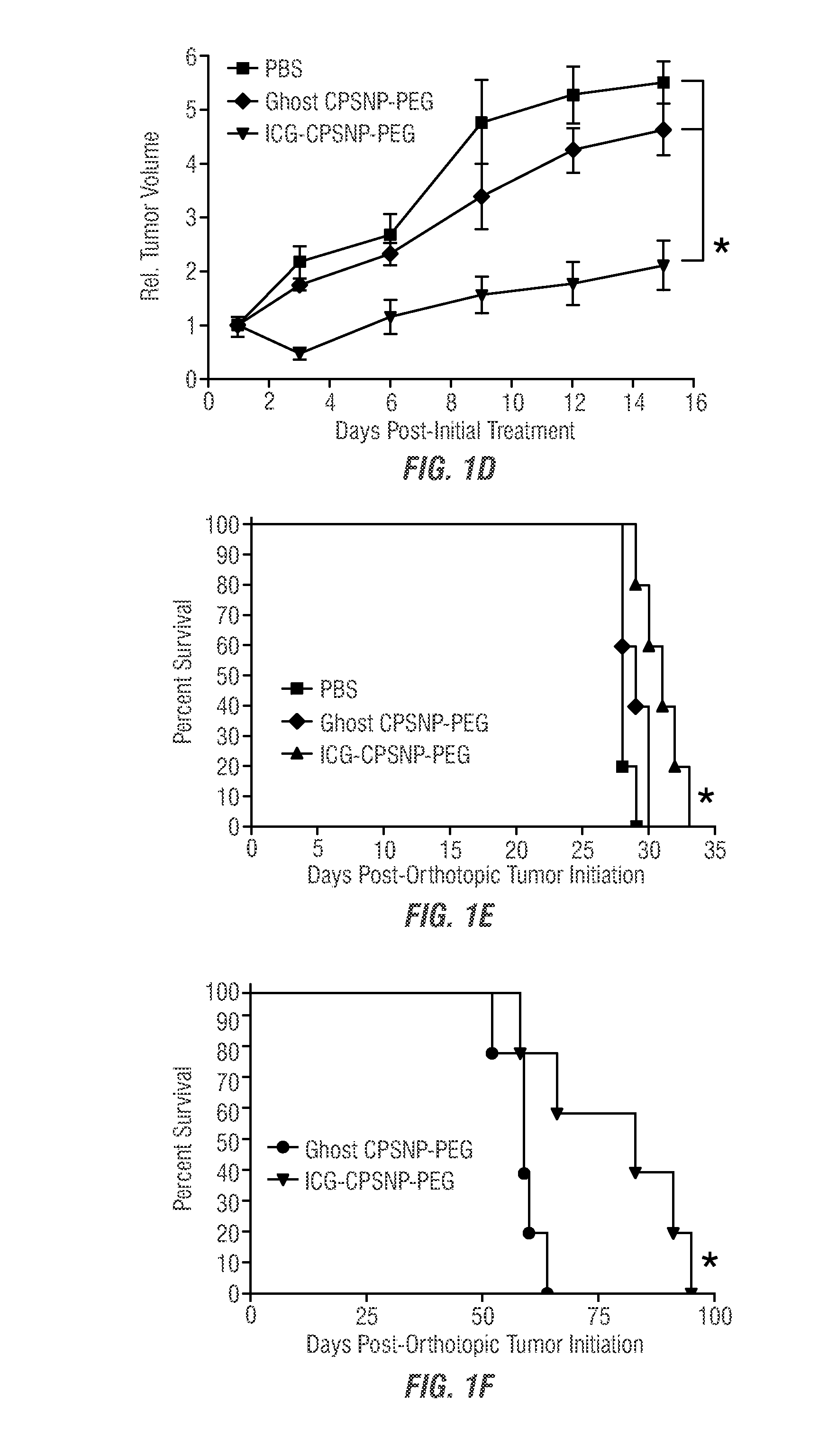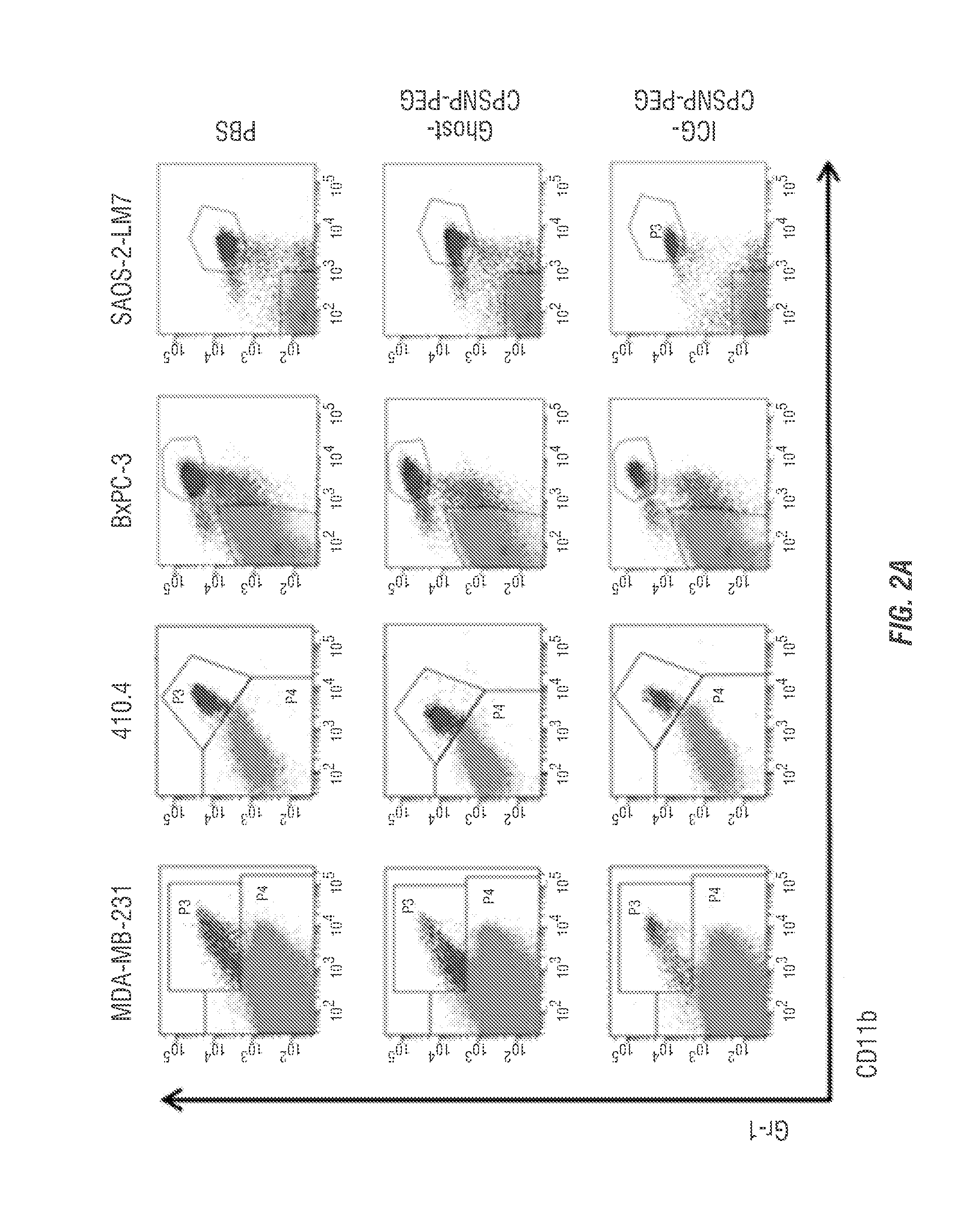dhS1P AND USE OF SAME AS AN ANTICANCER THERAPEUTIC AND IMMUNOMODULATOR
a technology of immunomodulator and anticancer therapy, which is applied in the direction of biocide, drug composition, phosphorous compound active ingredients, etc., can solve the problems of high toxicity of current cancer therapies, lack of efficacy and selective photosensitizers, and inability to selectively selectively inhibit tumor growth, so as to reduce toxic side effects of patients, inhibit tumor growth, and reduce the number of patients with mdscs
- Summary
- Abstract
- Description
- Claims
- Application Information
AI Technical Summary
Benefits of technology
Problems solved by technology
Method used
Image
Examples
example 1
PhotoImmunoNanoTherapy Blocks Tumor Progression and Extends Survival
[0094]The efficacy of dhS1P and PhotoImmunoNanoTherapy was evaluated in two murine models of breast cancer to study effects in T-cell-competent hosts (murine 410.4 cells in BALB / cJ mice), and T-cell-deficient hosts (human MDA-MB-231 cells in athymic nude mice; murine 410.4 cells in NOD.CB 17-Prkdcscid / J mice), in addition to a subcutaneously engrafted model of pancreatic cancer (murine Panc-02 cells in immunocompetent C57BL / 6J mice), an orthotopic pancreatic cancer model (human BxPC-3 cells in athymic nude mice), and an experimental model of lung-metastatic osteosarcoma (human SAOS-2-LM7 cells in athymic nude mice). A robust antitumor immune response was observed, and demonstrated to be due to dhS1P-dependent reduction in MDSC-like cells and a concomitant increase in immune effectors. Thus, immunomodulation was implicated as a critical mechanism by which ICG-CPSNP PDT can exert an antitumor effect in low oxygen tumo...
example 2
MDSCs are Decreased by ICG-CPSNP PDT
[0097]Anticancer T-cell-dependent and -independent immune responses have previously been shown to be negatively regulated by IMCs. To evaluate regulation of IMCs by PhotoImmunoNanoTherapy, MDA-MB-231 or 410.4 tumor-bearing BALB / cJ mice, were sacrificed five days post-NIR laser treatment. All models of tumor-bearing mice contained splenocyte populations of Gr-1+CD11b+IMCs (FIG. 2A). The IMCs of MDA-MB-231 tumor-bearing athymic nude mice also stained positive for the gp91phox subunit of the NADPH oxidase, an enzyme critical to the immunosuppressive nature of MDSCs, and were also predominately CD44+and CD115+, both markers that have been associated with MDSCs (FIG. 3 A-B). As demonstrated using a DCF test for production of reactive oxygen species (ROS), these cells produce ROS when stimulated with phorbol myristate acetate, an indicator which is frequently associated with the immunosuppressive nature of the IMCs (FIG. 3C). The Gr-1+nature of the IMC ...
example 3
Immune Effector Cells are Increased by ICG-CPSNP PDT
[0098]In the absence of an immunosuppressive environment, various immune effector cells have the ability to respond to and attack cancers. As shown above, antitumor efficacy with ICG-CPSNP PDT was observed in both athymic nude mice and Balb / cJ mice, suggesting that T-cell-independent aspects of the immune system were involved in an antitumor immune response, which also downregulated MDSC-like cells. Further evaluation of MDA-MB-231 tumor-bearing athymic nude mice revealed that ICG-CPSNP PDT, but not controls, resulted in a concomitant, statistical increase of splenic B-cells defined as being negative for MDSC markers (Gr-1−CD11b−) and yet CD19+CD45R B220+ (FIG. 4A, left column). Likewise, ICG-CPSNP PDT, but not PBS or photosensitizer-deficient CPSNP controls, caused a significant increase in splenic CD49b DX5+NK cells in MDA-MB-231 tumor-bearing athymic nude mice (FIG. 4A, right column). This observation was notable as the MDSC abi...
PUM
| Property | Measurement | Unit |
|---|---|---|
| Size | aaaaa | aaaaa |
| Therapeutic | aaaaa | aaaaa |
Abstract
Description
Claims
Application Information
 Login to View More
Login to View More - R&D
- Intellectual Property
- Life Sciences
- Materials
- Tech Scout
- Unparalleled Data Quality
- Higher Quality Content
- 60% Fewer Hallucinations
Browse by: Latest US Patents, China's latest patents, Technical Efficacy Thesaurus, Application Domain, Technology Topic, Popular Technical Reports.
© 2025 PatSnap. All rights reserved.Legal|Privacy policy|Modern Slavery Act Transparency Statement|Sitemap|About US| Contact US: help@patsnap.com



